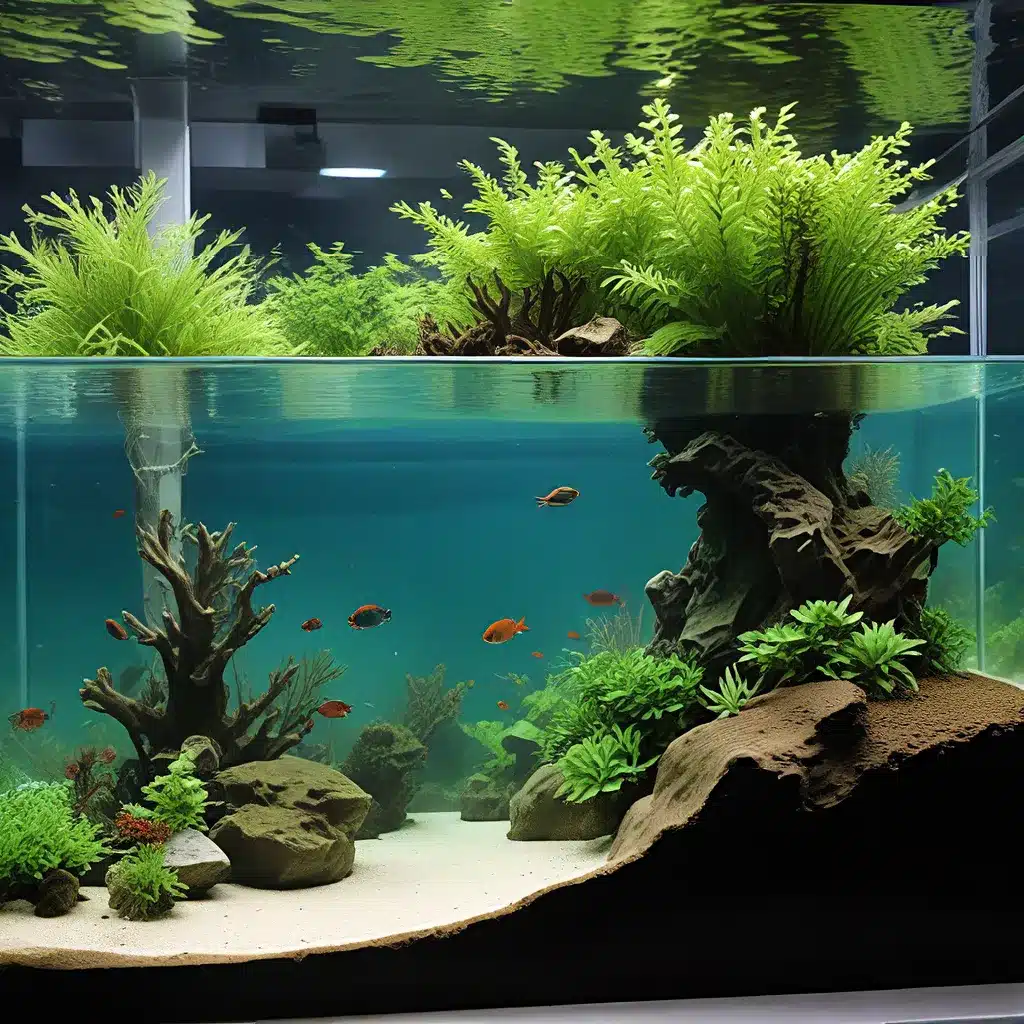
Embracing the Dynamic Nature of Botanical-Style Aquariums
One of the most captivating aspects of the botanical-style aquarium hobby is the ever-evolving nature of these systems. Unlike traditional tank setups that strive for a static, carefully curated look, botanical-style aquariums embrace the natural processes of decomposition, growth, and ecological succession. This dynamic quality can present both challenges and opportunities for aquarists seeking to balance the aesthetic appeal and long-term sustainability of their aquatic habitats.
As discussed by the experts at Tannin Aquatics, the urge to continuously experiment and iterate on our aquarium designs can be a double-edged sword. On one hand, it demonstrates our creativity and passion for the hobby, driving us to push the boundaries of what’s possible. On the other, it can lead to a sense of guilt or nostalgia when we feel compelled to break down an existing, well-functioning system in pursuit of a new vision.
The reality is that for many aquarists, especially those with limited tank space, the only way to explore different aquascaping ideas is to occasionally tear down and rebuild their current setups. This cyclical process of “erasing and starting fresh” is a natural part of the botanical-style aquarium journey, as we seek to create environments that better reflect our evolving aesthetic preferences and technical knowledge.
Embracing the Randomness of Nature
A key philosophical shift that often accompanies the transition to botanical-style aquariums is an appreciation for the inherent randomness and imperfections of natural aquatic ecosystems. Rather than striving for the meticulous, symmetrical layouts that characterize many traditional aquascapes, botanical enthusiasts embrace the chaotic, organic arrangements found in flooded forests, streams, and other wild habitats.
As researchers have observed, the distribution and accumulation of botanical materials in natural aquatic environments is heavily influenced by factors such as water flow, seasonal flooding, and the physical characteristics of the materials themselves. These processes, which can seem haphazard or even unsightly to the untrained eye, are an integral part of the function and ecology of these systems.
By recognizing and replicating the randomness of nature in our aquariums, we unlock a deeper level of understanding and appreciation for the complex interactions between the living and non-living components of these miniature ecosystems. Rather than fighting against the natural decomposition and evolution of botanical materials, we can learn to work in harmony with these processes, allowing our aquariums to gradually develop a rich, vibrant, and ever-changing character.
Balancing Aesthetics and Sustainability
One of the primary challenges faced by botanical-style aquarists is finding the right balance between maintaining an appealing visual aesthetic and ensuring the long-term sustainability and health of the system. While the decomposition of leaves, seed pods, and other botanicals can contribute to the desired tinted, earthy appearance of these aquariums, it can also present challenges in terms of water quality and maintenance.
Detritus, the accumulated organic matter from decomposing materials, is often viewed with skepticism in the broader aquarium community. However, in the context of botanical-style systems, this detritus can play a vital role in supporting the ecosystem’s food web and maintaining stable water parameters.
By embracing the natural processes of decomposition and understanding the ecological significance of detritus, botanical-style aquarists can learn to manage these systems with a lighter touch, avoiding the urge to constantly clean and remove every trace of organic material. This approach not only preserves the aesthetic appeal of the aquarium but also fosters a more resilient and self-sustaining environment for the resident flora and fauna.
Cultivating Patience and Adaptability
Successful botanical-style aquarium keeping requires a shift in mindset, one that embraces patience, adaptability, and a willingness to let nature take its course. Unlike traditional aquarium setups, where the goal is often to achieve a static, picture-perfect layout, botanical-style systems thrive on a more dynamic, ever-evolving approach.
As King Aquarium emphasizes, the beauty of these aquariums lies in their ability to transform over time, with the gradual breakdown of botanicals, the establishment of biofilms and fungal growth, and the interplay between aquatic and terrestrial elements. By relinquishing some control and allowing these natural processes to unfold, aquarists can witness the aquarium’s transition from a newly set up display to a mature, richly functional ecosystem.
This mindset shift can be challenging for some hobbyists, who may be accustomed to the immediate gratification of a perfectly scaped and maintained tank. However, embracing the patience and adaptability required for botanical-style aquariums can ultimately lead to a deeper appreciation for the dynamic nature of these systems and the joy of observing their evolution over time.
Conclusion: Embracing the Journey
The botanical-style aquarium hobby is a constantly evolving landscape, with new techniques, materials, and perspectives emerging all the time. As aquarists, we are faced with the dilemma of balancing the desire for aesthetic perfection with the need to foster sustainable, long-term aquatic environments.
By cultivating a mindset of patience, adaptability, and a willingness to let nature guide the way, we can unlock the true potential of these dynamic systems. Through careful observation, experimentation, and a deep respect for the natural processes that shape aquatic ecosystems, we can create aquariums that not only captivate the eye but also nurture thriving, resilient communities of life.
The aquarist’s journey is one of constant discovery, learning, and a profound appreciation for the wonders of the underwater world. By embracing the challenges and opportunities presented by botanical-style aquariums, we can push the boundaries of what’s possible in this fascinating hobby, and ultimately, deepen our connection to the natural world that inspires us.

